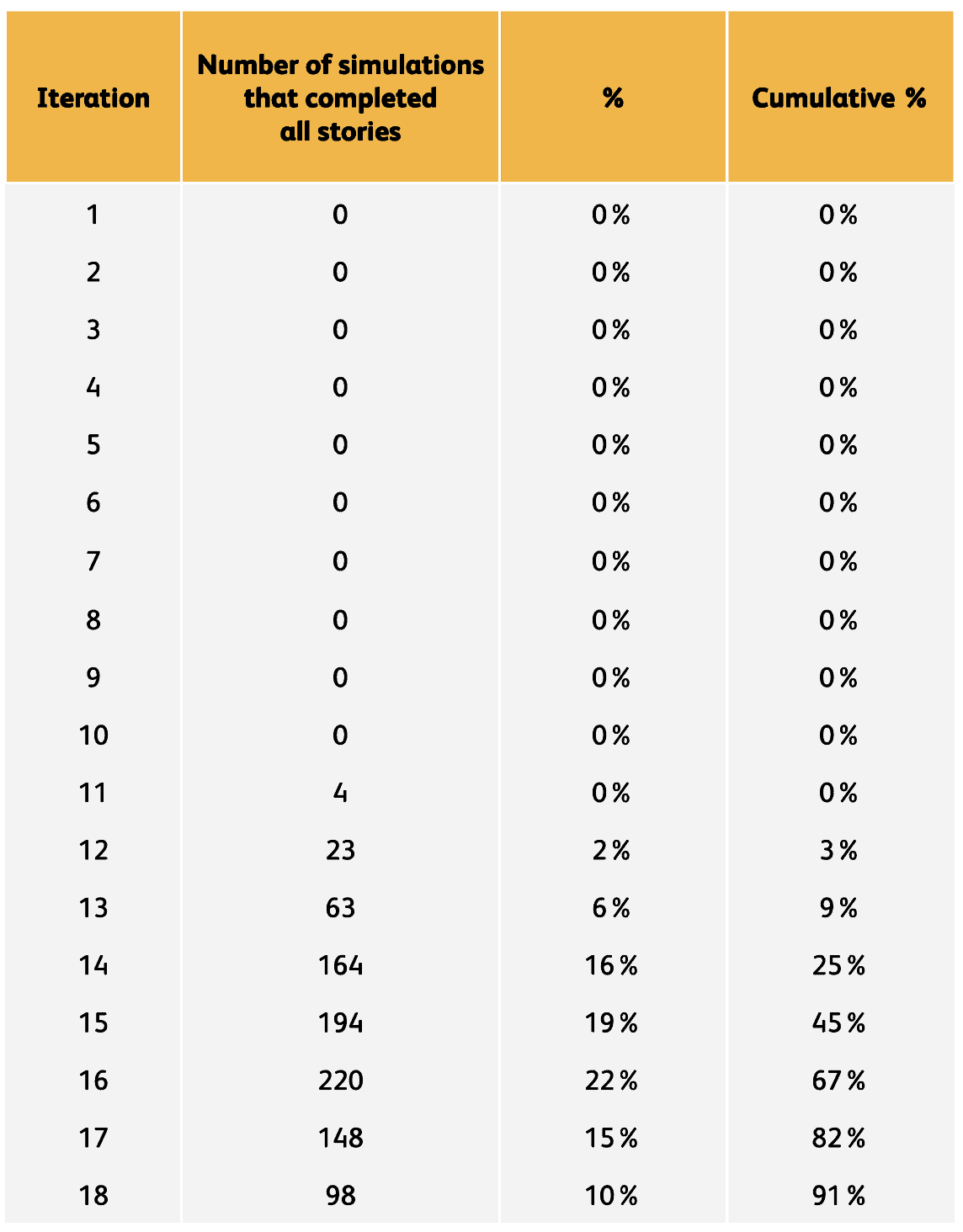How to fill out the spreadsheet
Okay, so let’s first explain how to use the spreadsheet, and explore how it works.
The first things you need to provide are some examples of how much the team has previously completed. For this to work well, you need to have some consistency – so let’s presume your team and their iteration durations haven’t changed. Don’t panic if they have, just use the best data you have and be aware that the forecasting will be less accurate so redo it once you have some more consistent data. Simply enter the number of stories that the team previously completed each iteration into the table on the Historical Throughput tab. You can add up to 10 iterations’ worth of data, but four or five is enough for a decent forecast.
Second, you need to define the size of the work you want to forecast; this is all on the Will It Be Done By tab. Enter the total number of stories – this could be everything you have defined for a feature, for example.
I’ve never worked on a software project where the backlog contained absolutely everything that would be required; we’ve always discovered more work as we went along. The next two fields allow you to provide an indicator for how frequently new work is discovered for your team. There are two ways to identify ‘new work’: bugs in the system that need to be addressed, or additional stories either created by splitting existing stories into more deliverable sizes, or sometimes just things that were missed initially. In the spreadsheet, these are defined as ratios. For example, the team tends to create two new stories for every five stories. These values help forecast how large the backlog is likely to be at the end.
Finally, you need to define the iteration number you want all the work completed by and which iteration number you have just completed.
As you change the values in the spreadsheet, you’ll see that the prediction at the bottom of the page changes. There are four options: Definitely, Probably, Possibly and Unlikely, and these are based on the % confidence that all the expected stories will be completed in the time allowed.




